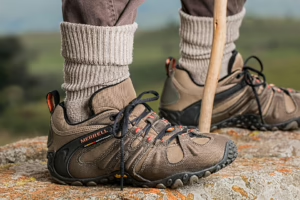Stretching Techniques to Alleviate and Prevent Muscle Spasms
Introduction
Muscle spasms are involuntary contractions of one or more muscles, often causing pain and discomfort. They can occur as a result of various factors, including dehydration, muscle fatigue, and strain. Stretching techniques can play a significant role in alleviating muscle spasms and preventing future occurrences. This article will explore different types of stretching, their benefits, and specific techniques designed to relieve and prevent muscle spasms.
Understanding Muscle Spasms
Before delving into stretching techniques, it’s crucial to understand the nature of muscle spasms. They can manifest in various forms, such as cramps (sudden, sharp pains) or twitching (involuntary contractions without pain)^[1]. Common causes of muscle spasms include:
- Dehydration: A lack of fluids can lead to electrolyte imbalances, causing muscles to contract involuntarily.
- Muscle fatigue: Overuse and prolonged physical activity without adequate rest can lead to muscle fatigue, triggering spasms.
- Inadequate stretching: Insufficient warm-up or stretching can result in tight muscles that are more prone to spasms.
- Nutritional deficiencies: Lack of essential minerals, such as potassium, calcium, and magnesium, can contribute to muscle cramping^[2].
The Benefits of Stretching
Stretching has numerous benefits that can help manage and prevent muscle spasms:
- Increased Flexibility: Regular stretching improves overall flexibility, which helps muscles respond better to stress and prevents spasms.
- Enhanced Blood Circulation: Stretching increases blood flow, delivering oxygen and nutrients to muscles while removing waste products.
- Muscle Relaxation: Stretching helps relieve tension and tightness, promoting a more relaxed state in the muscles.
- Improved Range of Motion: A full range of motion allows for better functional movement and reduces the risk of injury^[3].
Types of Stretching Techniques
1. Static Stretching
Static stretching involves holding a stretch for a period of time, usually 15 to 60 seconds. This technique helps elongate muscles and improve flexibility. It is generally safer and more effective for muscle recovery and injury prevention.
Example: To stretch the hamstrings, sit on the floor with your legs extended. Reach for your toes, keeping your back straight, and hold the position.
2. Dynamic Stretching
Dynamic stretching involves moving parts of your body through a full range of motion, usually in a controlled manner. This type of stretch is ideal for warming up muscles before physical activity.
Example: Leg swings, where you swing your legs forward and backward, are great for dynamically stretching the hip flexors.
3. Ballistic Stretching
Ballistic stretching uses momentum to force a muscle into an extended range of motion. While this technique can improve flexibility, it carries a higher risk of injury and should be approached with caution.
Example: Bouncing against a wall to stretch the shoulders could be an example of ballistic stretching but is not recommended for most athletes due to its risk.
4. Proprioceptive Neuromuscular Facilitation (PNF)
PNF stretching involves both stretching and contracting the muscle group being targeted. It is often done with a partner or using a towel/band for assistance. This technique can lead to increased flexibility.
Example: To perform a PNF stretch for the quadriceps, lie on your stomach, bend one knee, and pull your foot toward your buttocks while a partner gently pushes against your back.
Stretching Techniques for Specific Muscle Groups
1. Neck and Shoulder Stretches
Neck and shoulder muscle spasms can occur due to stress and poor posture. Here are some techniques to alleviate tension:
- Neck Stretch: Gently tilt your head to one side, bringing your ear toward your shoulder. Hold for 15-30 seconds, then switch sides.
- Shoulder Shrugs: Raise your shoulders toward your ears and hold for a few seconds, then relax. Repeat this 5-10 times.
2. Upper Back and Chest Stretches
A tight upper back and chest can lead to spasms. Consider the following:
- Cat-Cow Stretch: Start on all fours; arch your back upward like a cat (cat stretch), then lower your belly toward the ground (cow stretch). Repeat 5-10 times.
- Doorway Stretch: Stand in a doorway with your arms bent at a 90-degree angle. Lean forward until you feel a stretch in your chest and shoulders.
3. Hip and Thigh Stretches
Tight hips and thighs often lead to spasms, especially in athletes. Use these techniques:
- Figure Four Stretch: Sit on the floor, cross your right ankle over your left knee, and slowly push down on your right knee. Hold for 15-30 seconds, then switch sides.
- Hip Flexor Stretch: Kneel on one knee with the other foot in front. Push your hips forward until you feel a stretch in the hip flexor of the back leg. Hold for 15-30 seconds and switch.
4. Calf and Ankle Stretches
Calf muscles are frequently affected by spasms, especially after prolonged activity. Try these stretches:
- Standing Calf Stretch: Stand facing a wall and place one foot behind you. Keep your heel on the ground and lean forward, feeling a stretch in your back calf.
- Seated Calf Stretch: Sit with your legs extended and loop a towel around your toes. Pull back gently to stretch the calf muscles.
Incorporating Stretching into Your Routine
To maximize the benefits of stretching and prevent muscle spasms, consider the following guidelines:
- Warm-Up First: Always warm up your muscles before stretching. Engaging in light cardio for 5-10 minutes can help.
- Be Consistent: Aim to stretch regularly, ideally after each workout session, or at least three times a week.
- Listen to Your Body: Stretch until you feel a gentle pull but not pain. If you experience significant discomfort, ease out of the stretch.
- Use Breathing Techniques: Deep, controlled breathing during stretching can enhance relaxation and increase flexibility.
- Stay Hydrated: Proper hydration is essential for muscle function. Make sure to drink enough water before, during, and after exercise^[4].
When to Seek Medical Advice
While stretching can significantly alleviate muscle spasms, it’s essential to consult a healthcare professional if you experience persistent or severe spasms. They may indicate underlying conditions such as:
- Nerve compression
- Inflammatory diseases
- Electrolyte imbalances
Proper diagnosis and treatment can help address specific issues contributing to muscle spasms.
Conclusion
Muscle spasms can be uncomfortable and debilitating, but incorporating effective stretching techniques into your routine can significantly alleviate and prevent them. Using a combination of static and dynamic stretches targeted at specific muscle groups, individuals can enhance their flexibility and overall muscle health. Remember to approach stretching with care and mindfulness, listening to your body’s signals, and adjusting as necessary to promote a healthy, active lifestyle.
By prioritizing hydration, proper nutrition, and a balanced stretching regimen, you can significantly reduce the likelihood of muscle spasms and improve your physical performance in both daily activities and athletic pursuits.
References
- "Muscle Spasms: Causes, Symptoms, and Treatment." Mayo Clinic, www.mayoclinic.org.
- "Understanding Muscle Cramps and Spasms." Healthline, www.healthline.com.
- "Stretching: An Important Part of Physical Activity." Harvard Health Publishing, www.health.harvard.edu.
- "The Importance of Hydration in Muscle Function." Journal of Sports Medicine, www.journalofsportsmedicine.com.


























Add Comment